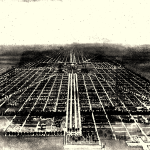A dramatic practical application of “weird science” may revolutionize computers in the next five years:
A new photonic chip that works on light rather than electricity has been built by an international research team, paving the way for the production of ultra-fast quantum computers with capabilities far beyond today’s devices.
Future quantum computers will, for example, be able to pull important information out of the biggest databases almost instantaneously. As the amount of electronic data stored worldwide grows exponentially, the technology will make it easier for people to search with precision for what they want.
An early application will be to investigate and design complex molecules, such as new drugs and other materials, that cannot be simulated with ordinary computers. More general consumer applications should follow.
Jeremy O’Brien, director of the UK’s Centre for Quantum Photonics, who led the project, said many people in the field had believed a functional quantum computer would not be a reality for at least 25 years.
“However, we can say with real confidence that, using our new technique, a quantum computer could, within five years, be performing calculations that are outside the capabilities of conventional computers,” he told the British Science Festival, as he presented the research.
The breakthrough, published today in the journal Science, means data can be processed according to the counterintuitive rules of quantum physics that allow individual subatomic particles to be in several places at the same time.
From a sidebar:
Why quantum computing?
To make use of properties that emerge on an ultra-small scale. “Entanglement” – the ability of subatomic particles to influence one another at a distance – and “superposition” – the fact that a particle does not have a definite location and can be in several places at once – are the two most important properties.
Yes, it’s weird but why is it useful?
Because quantum particles can do very many things at the same time, unlike an electronic “bit” in conventional computing. The use of quantum particles, or “qubits”, permits parallel computing on a scale that would not be possible with conventional electronics.
What particles are you talking about?
Many scientists are working with atoms or ions trapped in ultra-cold conditions. But the latest discovery by the Bristol-led team uses photons – light particles.
How does a quantum chip actually work?
There are several models. The Bristol version sends “entangled” photons down networks of circuits in a silicon chip. The particles perform a co-ordinated “quantum walk”, whose outcome represents the results of a calculation.
via FT.com / Global Economy – Computers set for quantum leap.











